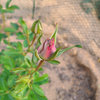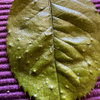Asian Citrus Psyllid
agility_mom
13 years ago
Related Stories

GARDENING GUIDESHow to Keep Your Citrus Trees Well Fed and Healthy
Ripe for some citrus fertilizer know-how? This mini guide will help your lemon, orange and grapefruit trees flourish
Full Story
GARDENING GUIDESSpring Citrus Care Reaps Months of Sweet Rewards
Learn how to tend citrus trees in spring and ways to preserve their delicious fruit
Full Story
HOUZZ TOURSHouzz Tour: A Sleek Prefab Warms Up
Asian touches, furniture and finishes turn a showhouse into a home
Full Story
FARM YOUR YARDIf You Have Room for Only One Fruit Tree ...
Juice up a small garden with one of these easier-care or worth-the-effort fruit trees for a mild climate
Full Story
MOST POPULARHouzz Quiz: What Style of Kitchen Should You Have?
Should you be cooking up a storm in a modern, traditional, farmhouse or another style of kitchen? Take our quiz to find out
Full Story
EDIBLE GARDENSHow to Grow 10 Favorite Fruit Trees at Home
Plant a mini orchard in fall, winter or early spring to enjoy fresh-off-the-tree fruit the following year
Full Story
BATHROOM DESIGN7 Striking Paint Colors for Your Powder Room
Whether you opt for a little or a lot, see why the petite bathroom is the perfect place for a fun hue
Full Story
ARBOR DAY8 Reasons to Plant a Great Tree
Beauty is its own reward, but the benefits of planting the right tree in the right place go way beyond looks
Full Story
SAVING WATERXeriscape Gardens: How to Get a Beautiful Landscape With Less Water
Conserve water and make gardening much easier with the xeriscape approach’s 7 principles
Full Story
KITCHEN APPLIANCESConsidering a New Kitchen Gadget? Read This First
Save money, time and space by learning to separate the helpers from the hassles
Full StoryMore Discussions








turtleman49
agility_momOriginal Author
Related Professionals
Ilchester Landscape Architects & Landscape Designers · Mitchellville Landscape Architects & Landscape Designers · Rancho Palos Verdes Landscape Architects & Landscape Designers · Stamford Landscape Contractors · Brunswick Landscape Contractors · Cordele Landscape Contractors · Holtsville Landscape Contractors · Hoover Landscape Contractors · La Vista Landscape Contractors · Ringwood Landscape Contractors · Soddy Daisy Landscape Contractors · South Hackensack Landscape Contractors · West Chester Landscape Contractors · Murphy Carpenters · Walker Carpentersturtleman49
agility_momOriginal Author
aztreelvr